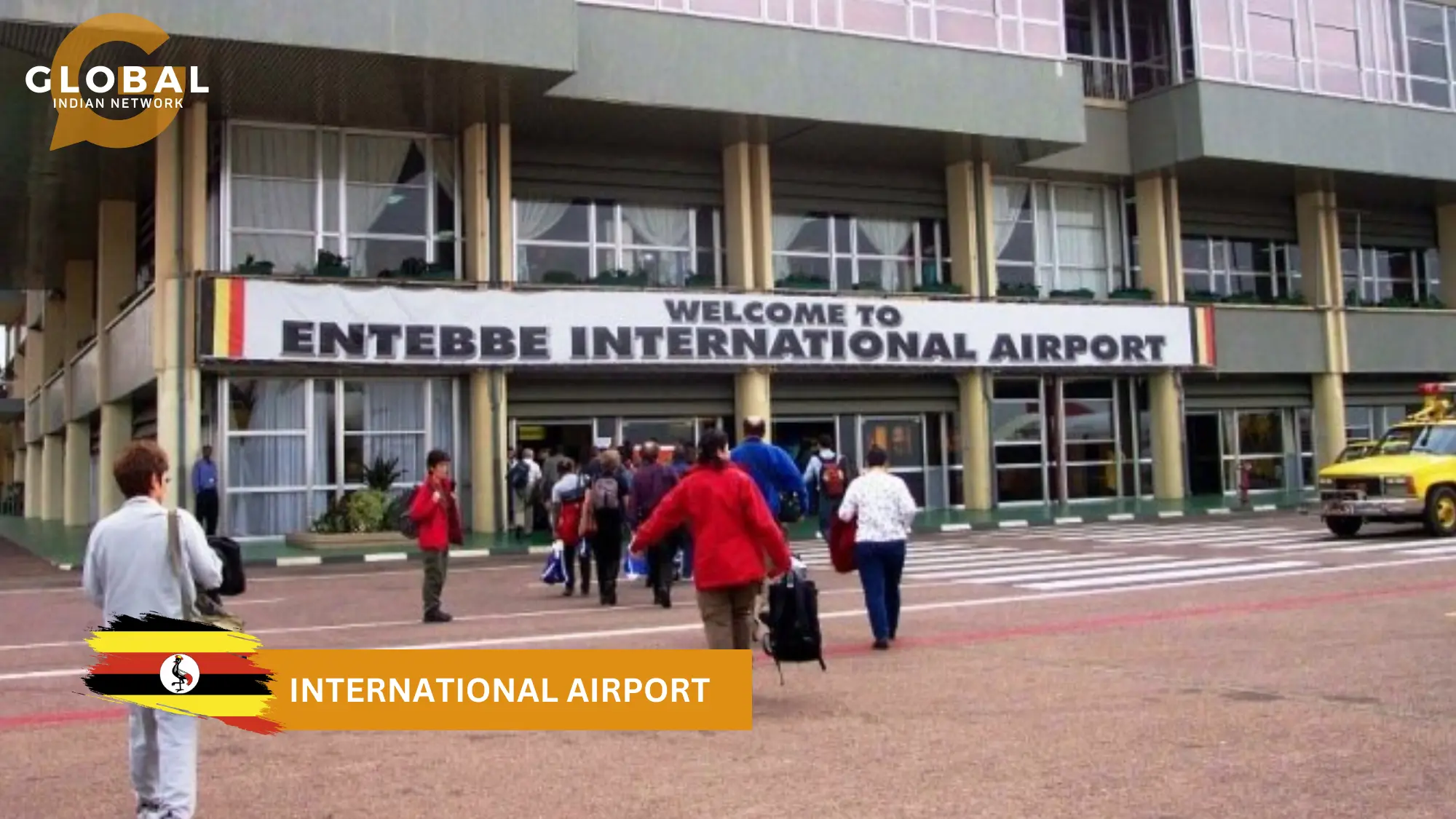International airports in Uganda serve as vital gateways to the nation and the East African region. These airports are essential in facilitating travel, trade, and tourism, connecting Uganda to the world beyond its borders. Uganda’s aviation infrastructure reflects its commitment to fostering regional connectivity and economic development from the bustling Entebbe International Airport, the country’s primary international gateway, to regional airports serving specific areas. In this overview, we’ll delve into the major international airports in Uganda, highlighting their significance and contributions to the nation’s growth and global connectivity.
Table of Contents
International Airport in Uganda with their Codes
Uganda is served by several international airports, each with unique features and importance. But it also has few domestic airports. Below are various international airports listed:
Entebbe International Airport (EBB)
Entebbe International Airport is the primary gateway to the country and the region. It has modern facilities and handles a significant portion of Uganda’s international air traffic. This airport also includes cargo operations for Uganda. The Entebbe city’s aerial view can be seen from Entebbe International Airport.
Uganda’s military forces mainly use Entebbe International Airport. The airport offers a range of facilities, including immigration services, duty-free shops, restaurants, and car rental services. They modernised and improved the existing passenger terminal building at Entebbe International Airport. Entebbe International provides cheap and direct flights. Entebbe International Airport hosts a variety of international airlines. It connects numerous destinations across Africa, Europe, the Middle East, and Asia.
IEATA code: EBB
ICAO code: HUEN
Gulu Airport (ULU)
The airport is located in Gulu, a town in northern Uganda. Gulu Airport is crucial in supporting regional connectivity and economic development in northern Uganda. It primarily serves domestic flights but has the potential for future international expansion. The airport has basic facilities for passenger services and cargo operations.
IEATA code: ULU
ICAO code: HUGU
Arua Airport (RUA)
This airport is situated in Arua, a town in the West Nile sub-region of Uganda. Arua Airport serves as a vital air link for the West Nile region and supports both domestic and limited international flights. The Arua Airport provides essential services for travellers and cargo transportation.
IATA Code: RUA
ICAO Code: HUAR
Kabalega Falls Airport (PAF)
It is the airport located near Murchison Falls National Park in northwestern Uganda. Kabalega Falls Airport primarily serves the tourism sector, providing access to one of Uganda’s most famous national parks, Murchison Falls. It allows tourists to access the park quickly. While relatively small, the airport offers services catering to tourists and park visitors.
IATA Code: KBG
ICAO Code: HUKF
Soroti Airport (SRT)
The airport is situated in Soroti, a town in eastern Uganda. Soroti Airport contributes to regional connectivity and economic development in the east of Uganda. It facilitates both passenger and cargo transportation. The domestic airport provides essential services and supports domestic flights.
IATA Code: SRT
ICAO Code: HUSO
Pakuba Airport (PAK)
The airport is located near Murchison Falls National Park in northwestern Uganda. Pakuba Airport, like Kabalega Falls Airport, serves the tourism industry, providing easy access to Murchison Falls National Park and the surrounding wildlife areas. It offers services aimed at tourists visiting the park and nearby attractions.
IATA Code: PAF
ICAO Code: HUPA
Kidepo Airport (LKB)
It is located near Kidepo Valley National Park in northeastern Uganda. Kidepo Airport supports tourism in the remote and pristine Kidepo Valley National Park, offering a convenient entry point for visitors interested in wildlife safaris. The airport caters to the needs of tourists and park enthusiasts.
These international airports in Uganda play various roles in facilitating travel, tourism, and regional connectivity, contributing to the country’s economic development and promoting its natural attractions. Also, airport expansion is there.
IATA Code: LKB
ICAO Code: HUKD
Importance of International Airport
International airports hold significant importance for countries and regions around the world. They serve as critical transportation hubs that offer a wide range of economic, social, and strategic benefits. Here are some key aspects of the importance of international airports-
- Global Connectivity: International airports provide countries with a gateway to the global community. They facilitate the movement of people, goods, and information across borders, fostering international trade, tourism, and cultural exchange. These airports serve as vital links connecting a country to the rest of the world.
- Economic Impact: International airports are engines of economic growth. They create jobs directly and indirectly in various sectors, including aviation, tourism, logistics, and hospitality. Airports attract investments, stimulate local economies, and contribute significantly to a nation’s GDP.
- Trade and Commerce: International airports are key facilitators of international trade. They handle the import and export of goods, connecting businesses to global markets. Efficient cargo handling and customs facilities at these airports are crucial for the movement of goods, fostering economic development and trade relationships.
- Tourism: Tourism is a significant driver of many economies, and international airports play a pivotal role in supporting this industry. They are the entry points for international tourists, making exploring a country’s attractions convenient. Well-connected airports encourage tourism growth, boosting revenue for businesses and governments alike.
- Cultural Exchange: International airports serve as hubs for cultural exchange. They unite people from diverse backgrounds, promoting cross-cultural understanding, dialogue, and appreciation. Airports often host cultural events and exhibitions, further enriching the travel experience.
- Technology and Innovation: International airports are at the forefront of technological advancements in the aviation industry. They invest in state-of-the-art facilities, navigation systems, and security measures, driving innovation and setting industry standards. Entebbe International also supports the airport expansion.
- Strategic Significance: From a national security perspective, international airports are strategically important. They serve as critical transportation hubs for the military and emergency response efforts. Governments often prioritize the security and resilience of these airports.
- Transportation Efficiency: International airports offer efficient and time-saving transportation options. They provide access to a wide range of domestic and international destinations, making travel more accessible and convenient for individuals and businesses.
- Foreign Investment and Diplomacy: Well-developed international airports can attract foreign investors and enhance diplomatic relations. They facilitate the movement of diplomats, business leaders, and delegations, fostering international cooperation and partnerships.
- Quality of Life: For residents, international airports improve their quality of life by offering access to a broader range of international destinations for leisure, business, education, and healthcare. They contribute to a country’s overall connectivity and global influence.
International airports are crucial components of a country’s infrastructure, providing a wide array of economic, social, and strategic benefits. They are central to fostering global connectivity, driving economic growth, and enhancing the quality of life for both residents and visitors.
Conclusion
The international airports in Uganda stand as vital gateways, not just to this remarkable nation but also to the broader East African region. From the bustling Entebbe International Airport, they connect Uganda with the world to the strategically positioned regional airports facilitating economic development. These aviation hubs foster global connectivity, trade, tourism, and cultural exchange. In the ever-shrinking global village, these airports remain essential for people, goods, and ideas, contributing significantly to Uganda’s growth, prosperity, and continued role as a vibrant and inviting destination for travellers and businesses. As Uganda continues to invest in developing and modernising its aviation infrastructure, the skies remain wide open for the nation’s future achievements on both the regional and global stages.
FAQs
Which is the main international airport in Uganda?
The main international airport in Uganda is Entebbe International Airport (EBB), located near the town of Entebbe, approximately 40 kilometres (25 miles) from the capital city, Kampala.
How do I get from Entebbe International Airport to Kampala or other major cities?
Various transportation options are available, including taxis, airport shuttles, and private car rentals. There are also public buses and shared minivans for more budget-conscious travellers.
Are there international flights to Uganda from major cities worldwide?
Entebbe International Airport offers international flights from major cities across Africa, Europe, the Middle East, and Asia. Airlines from various regions operate flights to and from Uganda.









